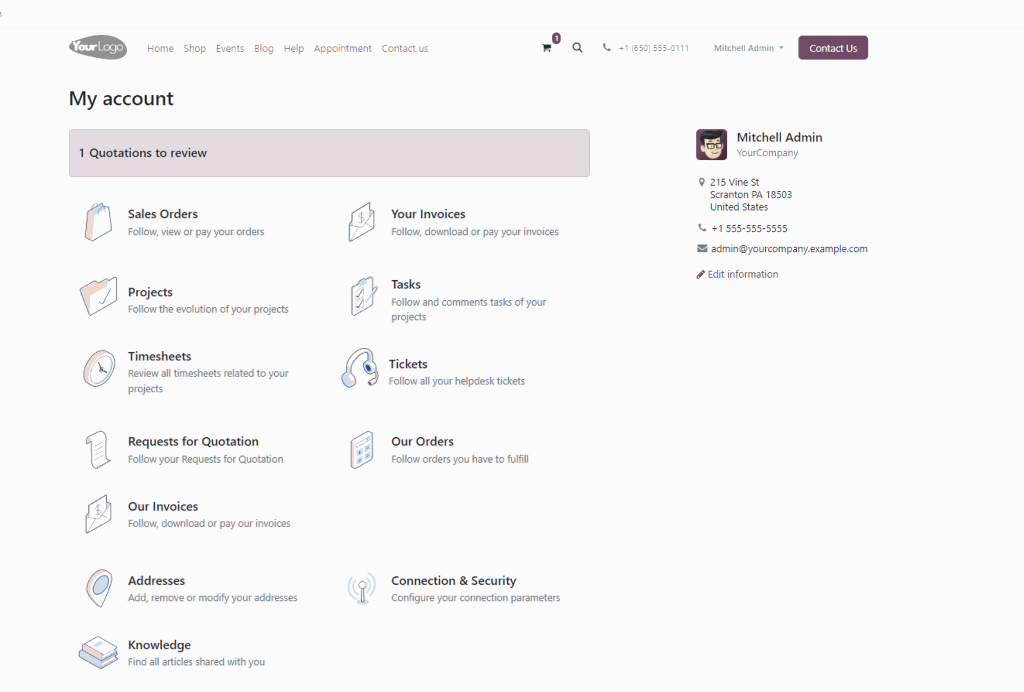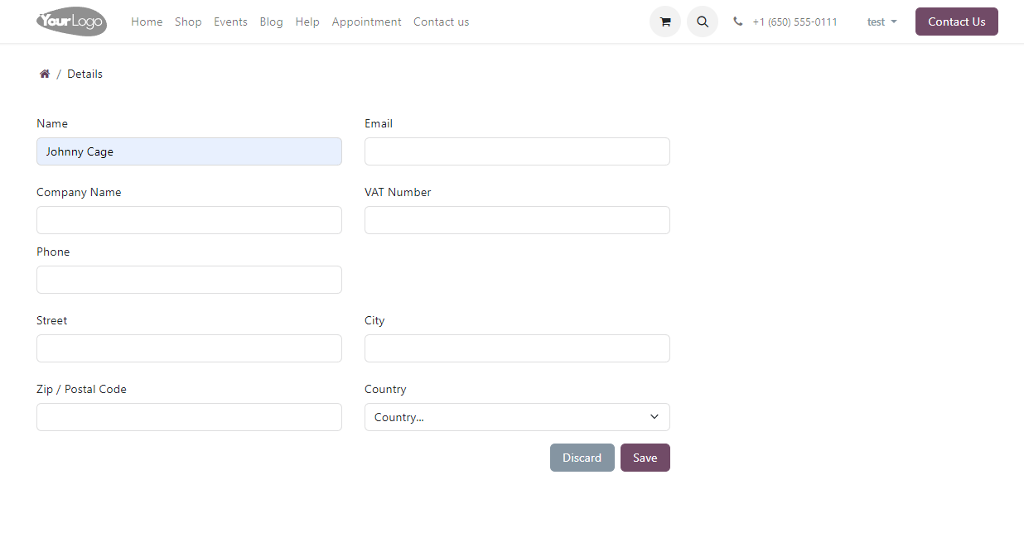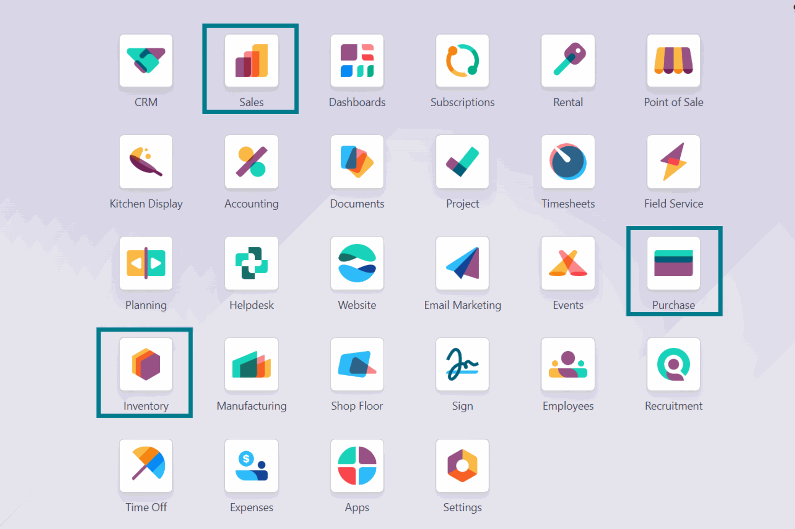Fun fact: If you have an online shop, 84% of your customers won't come back for the second time if you have logistics issues such as a poor return procedure or a difficult tracking mechanism. In the era of e-shopping, delivering products to customers safely and efficiently is the key to overcoming logistics issue.
Most online businesses struggle with shipping and delivery. They need help. This is where Odoo's comprehensive ERP excels. Odoo helps businesses streamline logistics by automating management systems.
We’ve discussed how to start an E-commerce platform for your business. Now, let’s explore how Odoo, a comprehensive and integrated platform for business management, can help e-commerce businesses overcome their logistics challenges and improve their customer satisfaction and loyalty.
Logistic problems overlooked by most e-commerce businesses
There are 5 common logistics issues that e-commerce companies are facing:
Tracking system
One way to build a good relationship with your customers is to provide them with accurate information about their online orders. Many online companies face the challenge of tracking packages once they are shipped by different carriers. Customers may get frustrated if they do not know the status and progress of their orders. Real-time visibility is important.
However, it can be difficult and error-prone to integrate different tracking systems from various e-commerce platforms, marketplaces, and carriers. The system may give inaccurate or outdated data. Customers may receive conflicting or old updates if the tracking information is not consistent.
Having a customer service team is another way to ensure customers get accurate information. You need to have a reliable and efficient system to track the packages from the time they leave the shipping facility to the time they reach the customers’ doorstep. But some businesses find it tiring to create a customer service platform that is rarely used.
Dynamic scaling
E-commerce adjusts supply chains without straining assets or resources by using dynamic scaling.
To scale effectively, the shipping and fulfillment processes need to be reliable and flexible to adjust to different order amounts. Smaller online stores may find it difficult to grow because they think advanced shipping systems are expensive. Most likely, they use many applications for their daily operations, which spells trouble for data accuracy.
In reality, accurate and current data on inventory, orders, and shipping are critical in this industry. Outdated systems and manual data entry don't work in the fast-paced e-commerce industry. Merchants need to have a clear picture of their inventory levels to ensure that products are always available to their customers.
Last-mile delivery, delays, and cross-border shipping
Delivery delays can be a frustrating logistics problem for both customers and businesses. Some delays are outside anyone's control, like unexpected road closures or severe weather. However, human error can contribute to many of these delays.
Using old or ineffective technology can cause delays in processing and shipping orders. KD100 conducted a study on the challenges of cross-border e-commerce logistics. Tracking deliveries across borders and complying with customs can cause issues during delivery.
It's harder to manage expectations for cross-country shipping than for local delivery. Different countries have different regulations and customs requirements. Different countries have different regulations and customs requirements. Merchants need a good system to remember the rules and customs of different places. If you mix up customs rules, your packages might get delayed or, worse, sent back.
To attract customers and stay ahead, e-commerce brands offer free or cheap delivery. Yet, this approach can be harmful. Companies set low delivery costs to stay in business, even if it means losing profit because they lack accurate expense data.
Limited space
Warehouses face a challenge when businesses start to scale as e-commerce sales increase and inventory grows.
Limited space can make it hard to store and fill orders efficiently. Warehouses can solve this problem by using better storage systems and optimizing layout. They can make use of vertical space and maximize capacity.
Simple, right? The challenge is remembering to account for all items when organizing your inventory in a new warehouse layout.
This also applies to cargo space. Merchants can use delivery vehicles and shipping containers to increase warehouse space. For instance, you can transport more goods in fewer trips by maximizing cargo space.
E-commerce saves time and lowers transportation costs by balancing cargo volume and space. To resolve this issue, you need to plan your delivery routes and load efficiently without wasting time.
The beginning is always NOW!
Why wait to start a seamless, integrated logistic management experience?
Reverse logistics
One problem that e-commerce businesses face more than brick-and-mortar stores is higher return rates. Some of the causes are the wrong item size, personal preference, or receiving a damaged item because of bad delivery.
Return logistics is quite tricky; it can make or break a business. A good habit to start is to monitor return rates for each product category, explain why, and take action as needed. To simplify the return process, you need to make authorizations, labeling, inspection, and restocking procedures more efficient. Then, you can quickly evaluate returns to decide if they can be sold, fixed, or thrown away.
Customers want an easy process for returning items. At the same time, store owners want to avoid damage or loss. To accommodate both, companies need to provide sturdy packaging and clear return instructions.
How can Odoo ERP modules streamline logistics operations?
To solve these problems, online businesses need a trustworthy partner to guide them with technology. If your partner knows how to implement an ERP system in SMEs with integrated shipping and tracking systems, it can lessen logistic issues.
Here are ways you can utilize Odoo to help your business with logistic challenges:
Inventory Management
Odoo offers an easy-to-use inventory system. After learning how to get started with the Inventory Module, businesses can keep track of their stock in different warehouses, manage inventory, and see available products. You should find all your products with information on where to find them and their description.
Merchants can automatically reorder stock using replenishment strategies. Using the Odoo replenishment strategies (min-max rules, MTO, or the master production schedule) the stock will be reordered automatically to avoid stock shortages. You can set up a reminder for your vendors to send restock materials before your orders arrive.
E-commerce businesses often struggle with managing inventory in different places. When Odoo connects with Shopify or WooCommerce, the information becomes connected. It means businesses can sync stock levels, update product availability, and manage orders using one system.
Go above and beyond to improve your inventory system more with Data Lake and interconnected sensors. Use the technology to manage inventory and make informed decisions with better data.
Warehouse Management

If you have a big online store with many warehouses, track stock in different places with the Warehouse submenu. It is housed under the Configuration section of the Odoo Inventory module. You can use this feature to create many warehouses for different places and manage them well.
Transferring products between different warehouses or locations within a warehouse is also simple. To move products in a warehouse, make a transfer order, process it, validate it, and you're done. Each warehouse can have specific locations, such as shelves, floors, or aisles to organize inventory. You can create a virtual location if you need to get products from different places.
You can improve stock management by using barcode scanning. This will make warehouse operations more accurate and efficient. The Odoo barcode system supports popular barcode types such as GS1, EAN13, and EAN14. This helps with smooth operations in both the front and back end. Now you can handle receipts, manage pickings, and make inventory adjustments in real-time from anywhere.
Quality control is essential to ensure that your product has no defects before any goods leave the warehouse. To create a new quality control point, enable this feature. Define quality checks for incoming and outgoing products. You can tell the system what to do if a test doesn't pass quality control. For example, you can dispose of the bad product in the "Actions to Perform" tab.
By the way, the purchase and sales modules are also integrated with Manufacturing. This means that when you receive an order for a product you have to make, you can create a manufacturing order directly from the sales order.
Shipping Integration
Upgrading your shipping system can seem costly. In reality, the delivery experience affects the buyers’ behavior. Perhaps the investment might be just what you need to keep customers happy.
The good news is with Odoo, you can get an all-in-one shipping tracking and integration at a less pricey cost. Odoo 17 Delivery module works with UPS, FedEx, and DHL to handle shipping logistics.
When a customer orders something in Odoo, the system figures out the shipping costs by using the rates and the customer's address. During the checkout process, the available shipping methods and costs will be displayed to the customer.
Once the order is confirmed, Odoo will make shipping labels and other necessary paperwork, such as customs documents.
Because the tracking system works with Odoo, you can see your shipment's status right away. The tracking information will be automatically updated in your ERP system. Then, companies can make things easier by having the system send shipping notifications directly to clients.
Route Optimization
If you use the right strategy to reduce your team's picking movement, they can pack 30% more products. Odoo's warehouse management module allows you to control how products move within the warehouse. It doesn't matter if you move a batch, cluster, or wave. It depends on your warehouse and product size.
When moving goods, make sure you use your vehicles and shipping containers efficiently. In Odoo, the algorithms will consider factors like distance, traffic, and delivery time. You can use popular third-party apps in Odoo to optimize external routes. These apps include Google Maps API, Route4Me, and OptimoRoute.
Setting up a route optimization in Odoo is not an easy feat. It’s better to work with an Odoo developer or consultant from Portcities. Our consultants will assist you in setting up Odoo's Warehouse feature. They will ensure it matches your needs and fits well with your logistics operations.
Customer Portal

Odoo provides a customer portal through a full supply chain suite of Sales, Purchase, Accounting, and Inventory modules together with the Website module to fulfill the comprehensive CMS.
This feature benefits both the seller and the customer. For sellers:
- Product recommendation: You can easily understand customers’ buying behavior based on their order history and carts. This will allow you to offer personalized product recommendations to your customers to improve your selling rate.
- Popular shipping carrier integration: For instance, if you own an e-commerce that works in the retail industry, you can use Odoo’s system to connect with shipping carriers’ return services to have your client return items safely and accurately.
- Manage customers’ queries: Through the portal, your customer service team can communicate faster with clients. The feature allows them to track their tickets and conversation history along with their tasks and RFQs

- Knowledge base: Create a knowledge section as a go-to resource in the customer portal. The section could include answers to typical customer queries, such as returns or terms and conditions of shipping abroad. In turn, this allows the customer service team to handle uncommon questions to remain productive.
Odoo’s Website module is also designed to empower customers:
- Order tracking: Customers can track their orders and view order history. This way, it’s easier for customers to repurchase their favorite products, and know the status of their shipment.
- Manage refunds: Returns and refunds can be communicated clearly. Customers can reach the seller anytime by sending a ticket to the sales representative. Sellers can even move a step further by enabling the Livechat feature, which allows customers to chat with your CS team in real-time.
- Update contact details: Having their packages arrive safely is a priority for the purchaser. Clients can update their addresses to ensure merchants send their orders to the right place. They can also update their email and phone numbers to receive updates about their shipping progress and to receive information about the latest products and events.

Analytics and Reporting

Odoo's analytics and reporting tools are incredibly powerful. It provides businesses with unparalleled insights into their logistics operations. With the ability to track key performance indicators (KPIs) such as order fulfillment rate, on-time delivery rate, and inventory turnover, businesses can identify areas for improvement.
To use these powerful tools in Odoo ERP, go to the Reporting tab in modules like Sales, Purchase, and Inventory.
- The Inventory module has reports that show inventory levels, stock movements, and valuation. You can analyze metrics such as stock turnover, value, and product aging.
- Warehouse report feature (under the Inventory module) provides insights into your warehouse operations. To make your warehouse work better, look at how fast things are picked and packed, how accurate the stock is, and how productive the workers are.
- The Sales module focuses on sales and order fulfillment processes. You can analyze metrics such as order fulfillment rate, on-time delivery rate, and sales performance by product or customer to improve your sales performance.
- The Purchase module offers a reporting feature to help you analyze your procurement and supplier management processes. You can track metrics such as purchase orders, supplier performance, and purchase costs to optimize your procurement processes.
Use the reports in each module to stay ahead, make informed decisions, and succeed.
Challenges in logistics? We've got you covered.
Imagine how far your business can go if you can solve your logistic issues.
Odoo can help you overcome any challenges in logistics. Whether you need to improve your ordering, stock management, or e-commerce operations, Odoo can automate and customize your business management systems. Just look at how Simple Hardware (SimpleHW) benefited from Odoo. With the help of Portcities, they implemented Odoo remotely and increased their order volume.
Don’t let distance stop you from getting the best solution for your logistics. Our experts can tailor Odoo to your specific needs from anywhere in the world. Contact us today and let Odoo simplify your logistics.